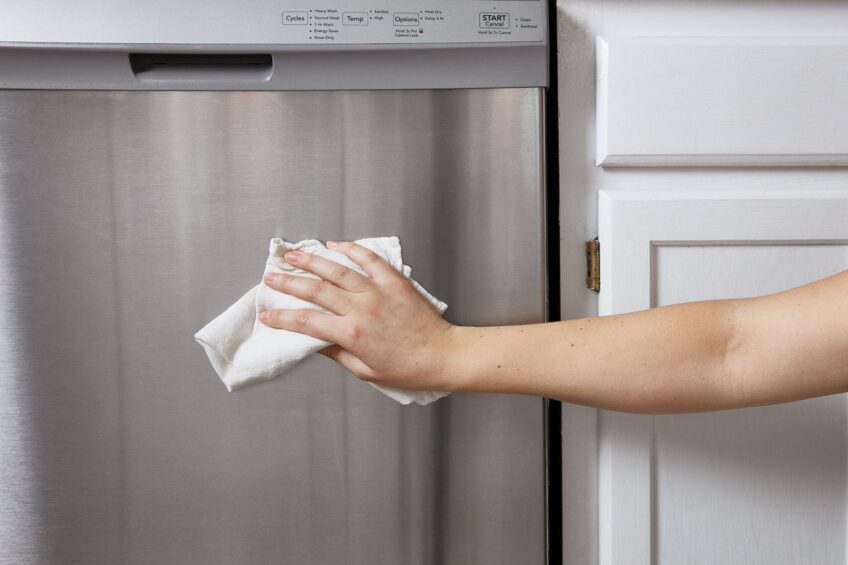Stainless steel appliances are a popular choice for modern kitchens due to their durability and sleek appearance. However, keeping them clean can be a challenge. Fingerprints, smudges, and water spots can all mar the surface, and using the wrong cleaning products can cause damage.
In this article, we’ll explore the secrets to cleaning stainless steel appliances to keep them spotless and shining like new. We’ll cover dos and don’ts, natural and commercial cleaning solutions, and maintenance tips to help you keep your stainless steel appliances looking their best for years to come.
Preparation
Cleaning them often require some preparation before you can begin. It is important to make sure you’re using the right products and techniques to avoid damaging the surface of the appliance. Additionally, it is important to read the instruction manual for each individual appliance to ensure you are able to clean it properly.
In this section, we’ll cover how to prepare for cleaning stainless steel appliances.
Gather all necessary materials
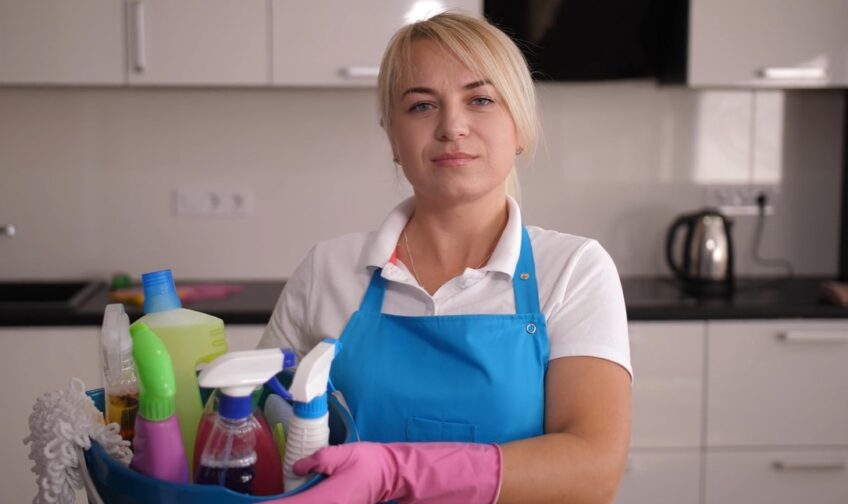
The following materials are essential for cleaning stainless steel: a mild, liquid detergent; a non-abrasive sponge or soft cloth; paper towels; a soft brush, such as an old toothbrush; and optional: white vinegar.
Additionally, if it is scratched or heavily tarnished due to age, you may need additional items – including olive oil, baking soda, and steel wool. Making sure you have all of these materials on hand before you begin cleaning them will make the process easier and more efficient.
Read the manufacturer’s instructions
Before beginning any cleaning project, it’s important to understand the manufacturer’s instructions for cleaning and maintaining your stainless steel appliances. The stainless steel used by most manufacturers today is a high-quality, non-corrosive material, but each manufacturer may have specific instructions on how their product should be cleaned and maintained. Read and follow the instructions carefully to ensure you get the best results.
Most manufacturers will recommend you not to use abrasive cleaners like scouring pads or steel wool, or harsh chemical cleaners such as ammonia or chlorine. These products could scratch or corrode the surface of your stainless steel and reduce its shine. Mild liquid dish detergent warm water is usually all you need for regular cleaning – and a soft cloth or sponge is safest for removing food residue and other dirt that accumulates on your appliances over time.
Cleaning
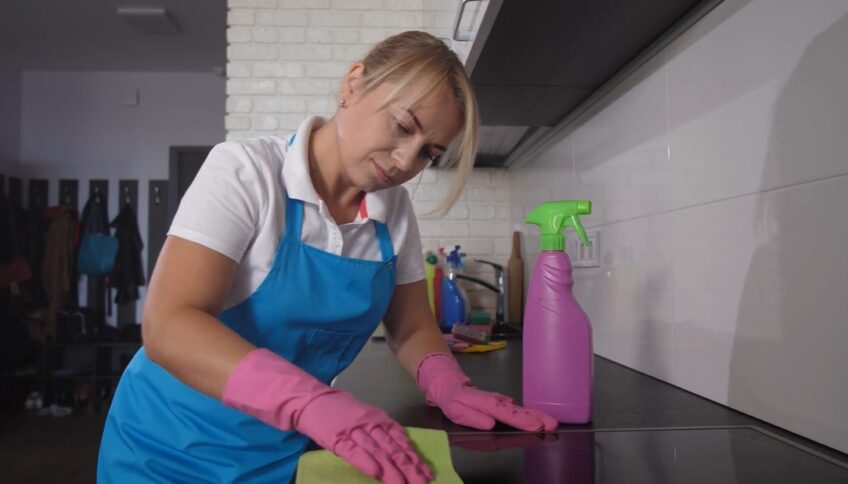
Keeping them clean is important to keep them looking new and to prevent the buildup of germs and bacteria. There are several methods you can use to clean your stainless steel appliances safely, without the need for harsh chemicals.
In this section, we’ll go over the basics of cleaning your stainless steel appliances and some tips on how to make the process easier.
Wipe down the surface with a damp cloth
When you’re ready to clean your stainless steel appliances, you’ll need a damp cloth. Start by wiping down the surface to remove any dust, dirt, or debris that has gathered since your last cleaning session. Using a damp cloth will help prevent water spots from forming and ensure that nothing gets trapped in the crevices of your appliances.
Once you’ve removed all the loose particles, use a soft microfiber cloth to dry the surfaces. This will help ensure there are no streaks and will also protect against smudging if you happen to accidentally touch it afterward.
Apply a stainless steel cleaner
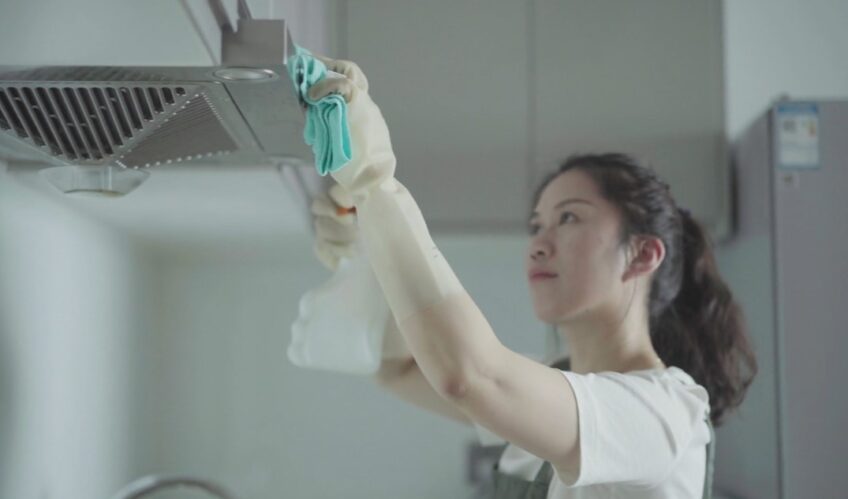
Using a stainless steel cleaner is the safest and most effective way to clean any stainless steel appliance. The most commonly used cleaner is a commercial stainless steel polish, however, there are also a variety of DIY cleaning solutions you can make at home. Be sure to avoid using any abrasive or corrosive cleaners, as they damage the metal.
Before you begin, dampen a soft cloth with warm water and wipe off any built-up dirt, grease, or dust from the surface of the appliance. Avoid using anything abrasive that may scratch the metal finish.
To properly apply the cleaner:
- Squeeze a small amount of stainless steel cleaner onto your cloth and apply it in a circular motion going with the grain of fabric on your appliance.
- As you go along, be sure to work from top to bottom in order to evenly apply the cleaning product across all surfaces.
- With one more soft dry cloth in hand, buff the area until it shines for an extra glossy finish!
It’s essential to use the right techniques and products to avoid damaging the surface. For instance, mixing bleach and baking soda might seem like a powerful cleaning solution, but it can actually be harmful to stainless steel appliances.
Use a damp cloth to remove any residue
Using a soft, damp cloth is a good way to clean off any residue from your stainless steel appliances. Make sure to use mild soap, such as dish soap, on the cloth before wiping down any areas without fancy coating coatings. Do not use harsh cleaners on stainless steel appliances.
Always scrub in the same direction with the grain of steel for best results. Woosh off any excess soap residue with another damp clean cloth or paper towel after scrubbing. Be sure to dry off your appliance immediately afterward with a dry cloth or paper towel to avoid streaks and water spots.
Polishing
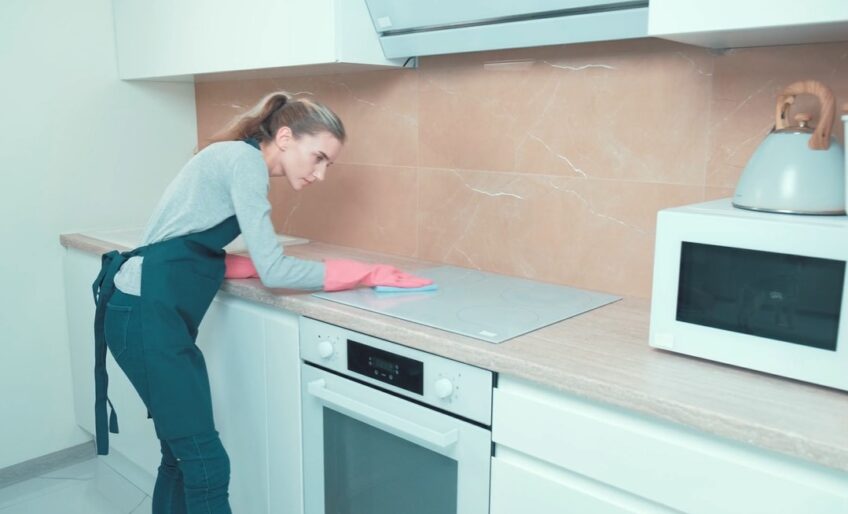
Polishing is an important step when it comes to cleaning stainless steel appliances. This method helps bring out the shine in the stainless steel, as it removes any dirt and grime that has built up on the surface.
It is important to use the right method and products when polishing stainless steel, to ensure there is no damage done.
In this section, we will discuss the best way to polish your stainless steel appliances.
Use a clean, dry cloth to buff the surface
To properly care for these surfaces, remember to use a clean, dry cloth to buff the surface. If the surface is especially dirty or greasy, you may need to use a tablespoon of mild dishwashing liquid mixed into two cups of warm water and apply a cloth dampened with this solution. Be careful not to oversaturate the area as too much liquid could cause streaking. After washing, rinse thoroughly with clean water and dry with a microfiber cloth.
For extra shine, there are special polishing products available that contain an abrasive cleaner or polish specifically designed for stainless steel. Always follow the instructions on the product label when using any cleaner or polish on stainless steel, and keep in mind all DIY polishing should be done sparingly — often monthly — as heavier cleaners can damage stainless surfaces.
Apply a stainless steel polish
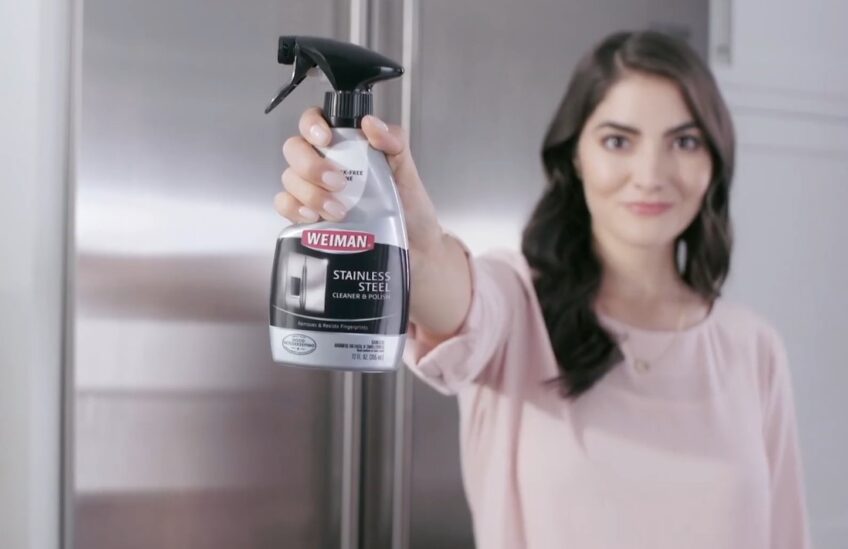
For particularly difficult stains, it is sometimes necessary to use a recommended stainless steel cleaner and/or polish. Begin by reading the manufacturer’s recommendations for proper cleaning methods as many cleaners and polishes can be abrasive, causing damage to the silvery finish.
Using a soft cloth, apply the cleaner/polish in a circular motion and follow the direction of the grain. Always use finger-tip pressure so you don’t scratch or pit the surface. After polishing, wipe away any remaining product with a dry cloth until there is no residue left behind.
For added shine and protection, consider using an automotive-grade wax meant specifically for stainless steel surfaces.
Buff the surface with a clean, dry cloth
Buffing stainless steel appliances with a dry, clean cloth can help restore the finish and remove fingerprints, smudges, and other blemishes. Start by wiping the surface with a cloth soaked in a mild detergent and water solution to remove any dirt or residue from the appliance. Wipe off the excess soap with a damp cloth and then allow the surface to air dry for about five minutes.
Once it’s dry, take a clean, lint-free cloth and begin gently buffing the stainless steel appliance in small circles using only light pressure. Work from one end of the appliance to another until you’ve buffed every visible inch of stainless steel. Rinse off any remaining debris by wiping with a damp sponge before drying with another clean cloth.
Maintenance
Regular maintenance is key to keeping stainless steel appliances in top condition. Cleaning agents, brushes, and equipment play an important role in the maintenance and should be chosen wisely. If you want your stainless steel appliances to last for years, it is important to keep up with regular maintenance.
In this section, we will look at the different cleaning supplies and techniques that you can use to keep your stainless steel appliances looking their best.
Wipe down the surface regularly
To keep stainless steel appliances looking their best and to protect them from scratches, it is important to clean them regularly.
To clean the surface of stainless steel appliances, start by thoroughly wiping down the surface with a soft cloth or paper towel and warm water (avoid cleaning products containing bleach for this step). It is recommended that you use a circular motion as you wipe to prevent any streaks from forming. You can also use a stainless steel-safe cleaner if necessary. Be sure to rinse out any cleaner that you use so no residue is left behind.
After wiping the surface with water or cleaner, buff it gently with a microfiber cloth until it shines. It’s also important to remember to never scrub at the stainless steel surface too hard, as this could cause scratches or other damage.
Use a protective coating to prevent fingerprints and smudges
To keep stainless steel appliances looking like new, a protective coating can help. A spray or wipe-on coating can protect stainless steel surfaces from fingerprints and smudges. Just make sure to use products that are specially designed for stainless steel. If using a spray-on coating, be sure to hold the can at least 8 inches away from the surface of the appliance. Wipe-on coatings are easier to apply and will leave an even, glossy finish; just use a soft cloth and a small amount of product.
Coatings make cleaning much easier; just wipe with a damp cloth to remove debris and dust. Regular routine cleaning is recommended to ensure the proper protection against corrosion, discoloration, and staining caused by dirt or spilled food particles or liquids. For heavier dirt buildup, use mild soap mixed with warm water and lightly rub in the direction of the grain using a soft cloth or sponge. Rinse the surface with plain water when finished, then dry with a clean cloth for best results. Be careful not to press down too hard on the surface as this can damage it over time.
Clean any spills immediately
The longer they are left, the harder they are to remove. For dried or stubborn stains, wet the area with warm water and wipe it with a soft cloth soaked in a mild detergent. Wipe it dry with a soft cloth or alternatively, you can use paper towels to dry the appliance surface.
If there is still residue, use a non-abrasive cleaner and scrub gently with a plastic scrubber to remove the residue completely.
FAQs
How often should I clean my stainless steel appliances?
It is recommended to clean them once a week or as needed.
Can I use regular cloth for the job?
It is recommended to use a soft, non-abrasive cloth or sponge to clean them.
Should I wipe with or against the grain when cleaning stainless steel appliances?
It is recommended to wipe with the grain when cleaning them to prevent scratches and streaks.
How do I remove tough stains?
You can use a commercial cleaner or make a paste of baking soda and water to remove tough stains.
What should I do if I spill something on my stainless steel appliances?
Clean up spills immediately with warm water and mild detergent to prevent stains and damage.
How can I protect my stainless steel appliances from scratches?
Avoid using abrasive materials, and use a soft, non-abrasive cloth or sponge to clean them.
Can I use ammonia to clean my stainless steel appliances?
No, ammonia and other harsh chemicals can damage the surface.
What is the best way to maintain my stainless steel appliances?
Use a microfiber cloth to clean your appliances, wipe with the grain, avoid harsh chemicals, and clean spills immediately.
Conclusion
In conclusion, keeping your stainless steel appliances clean and shining is easier than you may think. By following the dos and don’ts of cleaning, using natural or commercial cleaners, and implementing maintenance tips, you can keep your appliances looking like new for years to come. Remember to always use soft cloths and sponges, dry thoroughly, and avoid harsh chemicals that can damage the surface of your appliances.
With these tips, you can enjoy the beauty and durability of stainless steel appliances in your kitchen, without the hassle of constantly dealing with fingerprints, smudges, and water spots.

